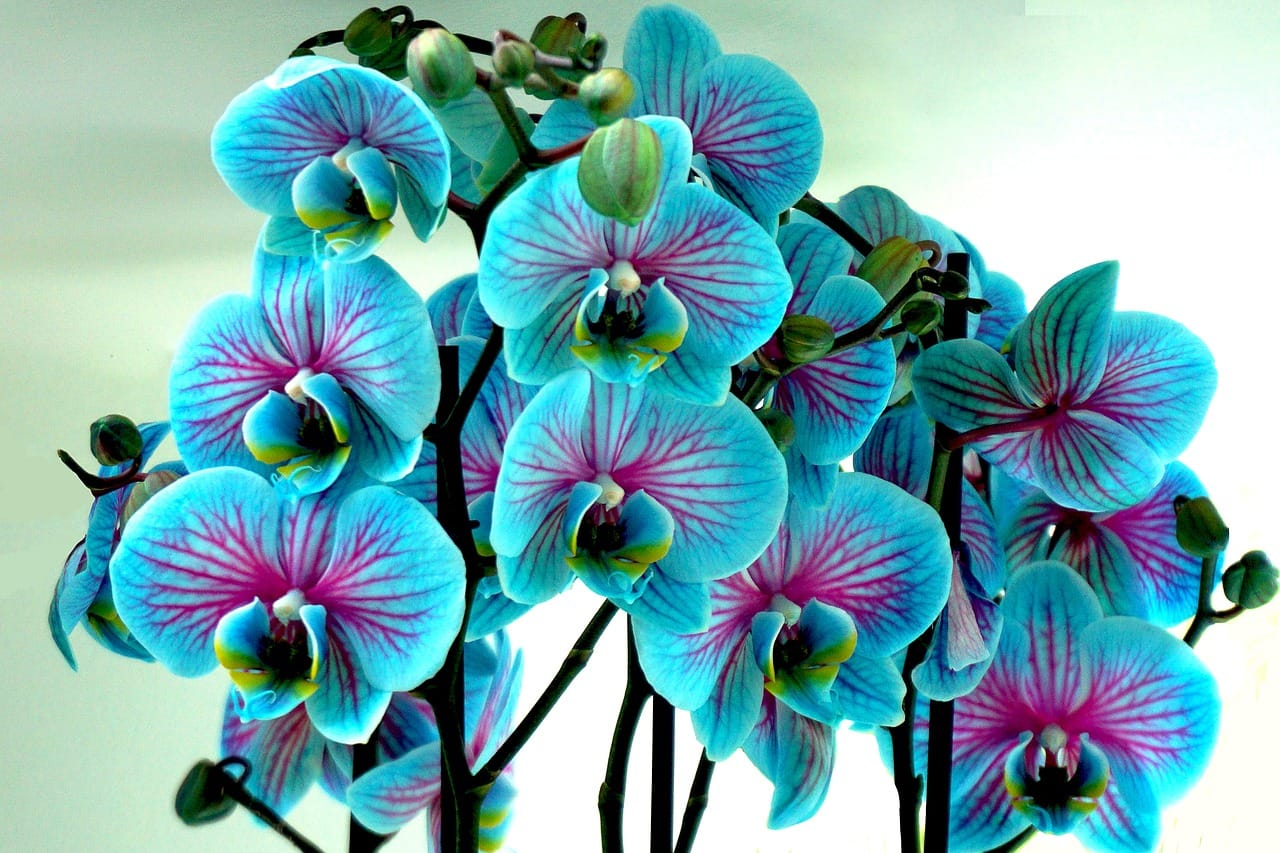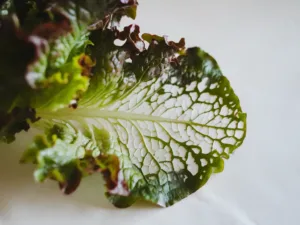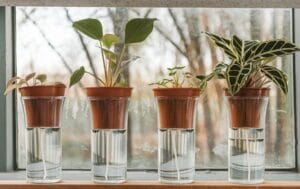Orchids – the queens of flowering plants, are among the most fascinating plant species in the world. Their exotic blossoms, which shine in countless colors and shapes, make them one of the most popular ornamental plants worldwide. What many people don’t know is that orchids can also be excellently cultivated in a hydroponic system! By precisely controlling nutrients, water, and light, you can not only preserve but even enhance the magnificent blooms of these plants.
Growing orchids in hydroponics opens up entirely new possibilities. Whether you want to beautify your home with breathtaking blooms or create a small oasis for pollinators like bees and butterflies, hydroponics is ideal for letting orchids bloom in their full glory. Working without soil also has the advantage of reducing the risk of pests and diseases while keeping maintenance manageable.
The Best Orchids for Your Hydroponic System
Not all orchid species are the same, and this also applies to hydroponic cultivation. Some orchids thrive particularly well under the conditions of hydroponics. When choosing varieties, you should focus on robustness, blooming frequency, and ease of care – after all, you want to enjoy the blooms for as long as possible. Here are three orchid species that are particularly well-suited for hydroponics:
- Phalaenopsis (Moth Orchid)
This orchid is probably the best-known among houseplants. It is relatively easy to care for and often blooms several times a year, making it the ideal candidate for hydroponics. Its large, colorful blooms are a real eye-catcher. - Dendrobium
Dendrobiums are extremely robust orchids that are less prone to diseases and pests. They grow upright and produce a multitude of small flowers that appear in various colors. An excellent choice if you value diversity and vibrancy. - Cattleya
Cattleya orchids are known for their large and fragrant blooms, often used as cut flowers. They require a bit more care than other orchid species, but the effort is worth it – their blooms are majestic and ideal for decorative purposes.
These orchids not only offer visual highlights but are also well adaptable to the specific conditions in a hydroponic system.
The Perfect Home for Your Orchid
Orchids particularly like airy and well-ventilated environments, making them ideal candidates for certain hydroponic systems. Two systems stand out: the ebb and flow system and the deep water culture system. Both are not only easy to handle but also provide the roots of orchids with optimal growth conditions.
In the ebb and flow system, the plant’s roots are regularly flooded with water and nutrients and then drained. This simulates the natural growth conditions of many orchid species, which often grow on tree trunks in their native habitats, where the roots also alternately get wet and dry.
The deep water culture system, on the other hand, keeps the roots permanently submerged in water while continuously supplying them with oxygen. This system is particularly suitable for robust orchids like dendrobiums, which like to absorb a lot of moisture. The constant oxygen supply prevents the roots from rotting and promotes healthy growth.
With one of these systems, you can ensure that your orchids have the perfect environment to flourish magnificently and bloom all year round.
How to Successfully Grow Your Orchids
Growing orchids can be a bit challenging, but with the right methods, you will quickly see success. Unlike many other plant species, growing orchids requires a bit of patience, but once established, they reward you with magnificent blooms.
The first step in growing is to choose high-quality seeds or young plants. While growing from seeds is possible, it is often very time-consuming. It can take several years for an orchid grown from seed to show its first blooms. Therefore, it is advisable to start with orchid seedlings or young plants, which grow faster and bloom earlier.
Once you have your young plants, you can place them in growing substrates like coconut fibers or special growing cubes that are well-ventilated and provide enough space for root growth. Make sure the plants receive enough light and moderate humidity so the young roots do not dry out. After a few weeks, you can transfer the plants to your hydroponic system. It is important that the roots have enough space to spread out in the new environment.
The Best Substrate for Your Orchids
Orchids are often epiphytes in their natural environment, meaning they do not grow in soil but on trees or rocks, where their roots hang in the air and absorb nutrients from the surroundings. This is precisely why it is so important to choose the right substrate for orchids in a hydroponic system.
In hydroponics, you can use substrates like expanded clay, perlite, or coconut fibers. These materials provide excellent aeration for the roots and prevent them from rotting. Expanded clay, for example, is particularly popular because it retains water well while ensuring that the roots get enough air. Perlite is lighter and is excellent if you prefer a particularly airy structure, while coconut fibers retain moisture better and provide the roots with a bit more support.
It is important to choose a substrate that drains well to avoid waterlogging but still retains enough moisture to keep the orchids consistently supplied.
The Ideal Ambient Temperature for Stunning Blooms
Orchids are native to tropical and subtropical regions, which means they prefer a warm and consistent climate. When growing your orchids in a hydroponic system, you should ensure that the ambient temperature remains stable.
Most orchid species prefer daytime temperatures between 18 and 24 degrees Celsius, while nighttime temperatures can drop slightly but should not fall below 16 degrees Celsius. These temperature fluctuations simulate the natural day-night rhythm that orchids are accustomed to in their native habitats.
Another important factor is humidity. Orchids love moderate to high humidity of about 50 to 70%. In a closed hydroponic system, humidity can be well regulated, for example, by using humidifiers or regularly misting the plants.
How Much Light Do Orchids Really Need?
Light is one of the most crucial factors for the growth and bloom splendor of orchids. Many orchid species come from tropical regions where they grow in the shady understory or on tree trunks and receive only filtered sunlight. These are the light conditions you should replicate in your hydroponic system.
Orchids prefer indirect but bright light. Direct sunlight can burn the sensitive leaves and cause leaf discoloration. A location near an east or west window is ideal for ensuring the right amount of natural light. If you don’t have suitable windows, LED plant lights can be an excellent alternative. These special lights emit the light spectrum necessary for photosynthesis without overheating the plants.
A good tip is to observe the leaves of the orchids. A rich green indicates that the plant is getting enough light. If the leaves become pale green or yellowish, it indicates too much light, while dark green leaves are a sign of insufficient light. Adjust the light source accordingly to ensure optimal blooming.
The Right Water Values for Healthy Orchids: pH and EC Levels
When cultivating your orchids in a hydroponic system, it is essential to keep a close eye on the water values. Two important metrics to watch are the pH level and the EC level (electrical conductivity).
Orchids prefer a pH level in the range of 5.5 to 6.5. A pH level that is too low or too high can prevent the roots from absorbing certain nutrients, which can negatively impact plant growth in the long term. You can regularly check the pH level with a simple test kit and adjust it as needed with pH-up or pH-down solutions.
The EC level indicates how many dissolved nutrients are present in the water. Orchids do not require a very high nutrient concentration. An EC level between 0.8 and 1.2 mS/cm is generally ideal. Higher levels can lead to over-fertilization, while lower levels indicate that the plant is not receiving enough nutrients. It is important to find the right balance to promote the health of your orchids.
Providing Your Orchids with Everything They Need: Nutrients and Fertilizer
In a hydroponic system, orchids are directly supplied with nutrients through the nutrient solution, which means you can precisely control nutrient intake. Unlike many other plants, orchids have a relatively low nutrient requirement. This doesn’t mean, however, that they can do without fertilization – it’s all about the right amount.
A specialized orchid fertilizer is ideal because it is tailored to the plant’s needs. Make sure to choose a low-nutrient fertilizer with less nitrogen but more phosphorus to promote flower formation. During the growth phase, orchids especially need potassium and phosphorus to develop strong roots and blooms.
An important tip: Less is more! Over-fertilizing can damage the roots. It is advisable to use the fertilizer at half the recommended concentration and regularly add it to the nutrient solution. Check the EC level to ensure that the nutrient concentration is not too high.
Perfectly Harvesting Your Orchid Blooms
Orchid blooms are breathtakingly beautiful and long-lasting – a perfect combination if you want to use them for bouquets or decorations. However, there are a few points to consider to harvest the blooms at their best and preserve their beauty for as long as possible.
The right time to pick the blooms is crucial. It’s best to cut the blooms when they are fully open but still look fresh. Do not harvest wilted or damaged blooms, as they will wither faster and look less appealing. Use a clean, sharp pair of scissors or a knife to cut the stems just below the bloom or at the end of the flower stalk.
After cutting the blooms, ideally place them immediately in fresh water to prevent them from drying out. A small trick: if you cut the stem at a slight angle, the bloom can absorb more water and stay fresh longer. For decorative purposes, orchid blooms can last up to several weeks if properly cared for.
Keeping Your Orchids Healthy: Diseases and Pests
Even though orchids in a hydroponic system are less susceptible to pests and diseases, they can still be affected occasionally. A careful eye on your plants and regular care will help you detect and treat problems early.
The most common challenge with orchids is root rot, which occurs due to excessive moisture or poor root aeration. In a well-ventilated hydroponic system, this problem can be easily avoided as long as the substrate does not remain too wet. Ensure that the water drains regularly and that the roots can dry out between watering cycles.
Common pests on orchids are aphids and spider mites, which feed on the leaves and flowers. They often leave sticky residues or fine webs on the plants. You can combat them with biological methods such as neem oil or a mixture of water and soap. In severe cases, it may be necessary to remove the affected parts of the plant to prevent spreading.
A regular check on the leaves, flowers, and roots of your orchids is the best way to detect pests early and take timely action.
Special Tricks for Magnificent Orchid Blooms
Orchids can bloom all year round if properly cared for. To get the best out of your plants, there are some special tricks you can apply.
First, it’s important to know that many orchids need a dormant phase to gather new energy for the next bloom. This phase often occurs after flowering when the plant recovers and prepares for the next growth phase. During this time, you should reduce watering and fertilization to give the plant a little “rest”.
Another trick is the regular pruning of faded stems. By cutting the flower stalk just above the third node after blooming, you encourage the orchid to form a new flower stalk. This often leads to a new bloom within a few months.
Humidity also plays a crucial role in flower formation. Especially during dry periods or in heated rooms, you can increase humidity by regularly misting the plant or placing a bowl of water nearby. This creates ideal conditions for magnificent, long-lasting blooms.
Orchids in Hydroponics: More Than Just an Ornamental Plant
Cultivating orchids in a hydroponic system not only gives you the opportunity to care for these exotic beauties but also to experience them in a whole new way. Whether as an elegant decorative object in your home, a highlight for flower arrangements, or a useful plant for attracting pollinators – orchids can do more than just look good. Their unique root system and ability to thrive even in seemingly challenging environments make them ideal candidates for hydroponics.
With the right systems, proper care, and a bit of patience, you can admire your orchids in full splendor all year round. From the right variety selection to root care – every phase of the orchid life cycle can be optimized through hydroponics. You always have full control over nutrients, light, and environmental conditions, allowing your orchids to grow and bloom under the best conditions.
So why not take on the challenge and integrate orchids into your hydroponic system? They will reward you with their unparalleled bloom splendor and add a touch of exoticism and elegance to your home or garden.







